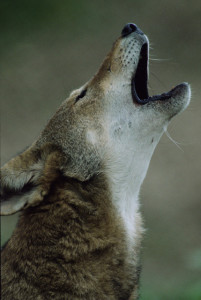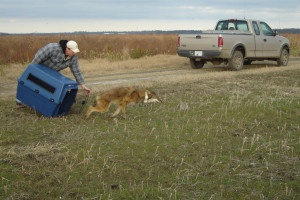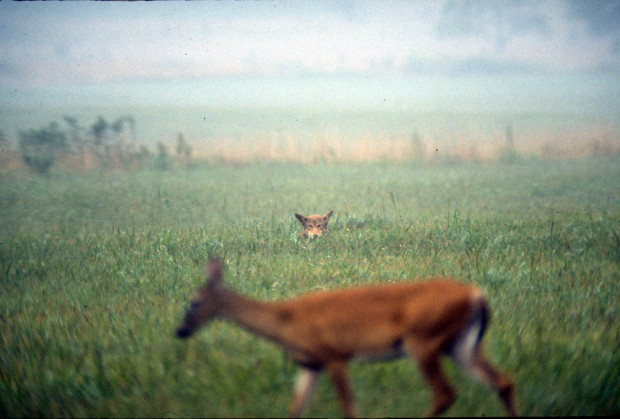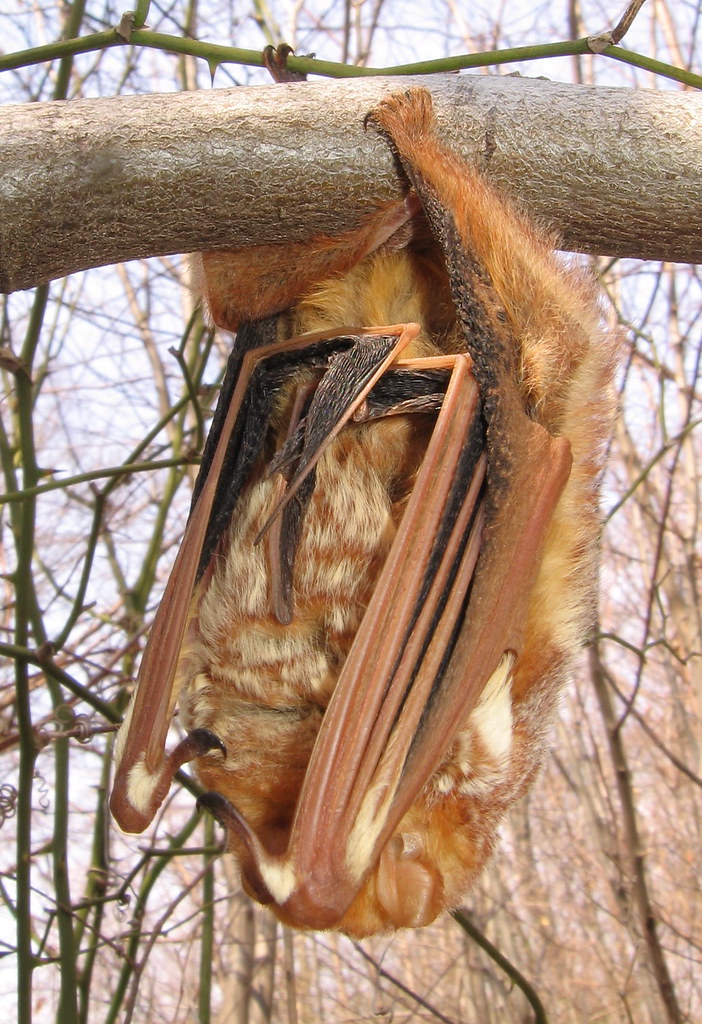We have much more to do and your continued support is needed now more than ever.
Red Wolves: an Endangered Species in Peril

With more than 152,000 square acres, the wetland refuge is home to countless species, but one in particular attracts visitors from all over the world—the red wolf. These travelers come a long way for something they are unlikely to even see at all in the wild. Instead on Wednesday nights from June through August visitor services staff will take guests on “howling” tours. Unless there is heavy rain or lightening, visitors will soon hear the howls pierce the night.
Alligator River Refuge and the surrounding peninsula is the only place in the world where the howls can be heard in the wild. The wolves’ presence is the result of decades of conservation work that has restored about 100 red wolves to three national wildlife refuges and the surrounding lands. Unfortunately, this beautiful and unique animal is at risk of being lost forever due to a recent spate of illegal shootings.
More on this in a moment—first, some context is needed.
Recovering from Extinction
That the red wolf is roaming in the wild today is itself a remarkable story. Though the species once ranged from eastern Texas to the Atlantic Coast and north into southern Pennsylvania, by 1970 uncontrolled hunting, habitat loss and predator control programs had removed the red wolf from all but the remotest parts of Texas and Louisiana coast.
After the species was listed as Endangered in 1967, the U.S Fish and Wildlife Service (FWS) initiated a plan to capture as many genetically pure red wolves as possible. Capturing almost 400 animals, a team of researchers carefully removed any coyotes and hybrids, leaving just 14 breeding red wolves. In 1980, FWS declared the species extinct in the wild. The approximately 300 red wolves alive today are all descended from these few individuals.
Under the recovery plan, the first four pairs of red wolves were released in Alligator River National Refuge in 1987. Today the wild population stands at around 100 individuals. As many as 200 more are spread across 44 U.S. captive-breeding facilities. At facilities like Pocosin Lakes National Wildlife Refuge, education programs are held where guests can learn more about these amazing animals.

Not Out of the Woods
While the red wolf’s return to the wild is a conservation triumph, the species’ long-term success requires constant monitoring and support. Two key problems still imperil the red wolf:
Following the red wolf’s extermination in the region, coyotes (native to central North America) moved into much of the red wolf’s former range, including the Albemarle Peninsula. Capable of adapting to human presence, the coyote may compete with red wolves for prey. An even greater threat is the risk of interbreeding between the more numerous coyote and the scarce red wolf
Nor are coyotes the only threat. Human interactions with red wolves often end in tragedy. While the red wolf is a shy creature and unlikely to seek a confrontation, humans pose several risks as our own range continues to expand. Constant development and new suburban housing fragments potential habitat for the wolves, and increases the likelihood of an encounter. Sometimes this can mean automobile accidents, but more recent encounters have a more sinister nature. Poachers have set their sights on this fragile population.
Poachers Target Red Wolves
Within the past few years the number of red wolves shot and killed has spiked upward. Last year, between October 28 and November 19, six red wolves were found shot. Earlier this month FWS staff found another red wolf that had been shot and killed. The radio-tracking collars on the dead wolves had been tampered with, suggesting that whoever killed them was trying to cover up the shooting.
Combined with accidents, the species lost more than 10 percent of its wild population in just one year. This loss of adults, including breeding animals, will likely reduce the production of cubs during the next few years, creating a major obstacle for the red wolf’s long-term survival.

NWF Puts the Target on Poachers
The red wolf is protected by the federal Endangered Species Act, and a poacher who targets any of the remaining animals in the wild not only imperils the decades-long recovery effort but also faces federal criminal and civil charges. The National Wildlife Federation and its state affiliate, the North Carolina Wildlife Federation, are committed to ensuring that those responsible for illegal shootings are brought to justice. In addition to supporting outreach and education to help build public support for red wolf conservation, the two federations and their conservation partners are offering a reward for anyone who provides information leading to the arrest and conviction of a red wolf poacher. Taken together, combined pledges of the conservation groups amount to $33,000.
“The National Wildlife Federation, as one of the organizations that helped to bring the red wolf back into the wild in the 1980s, is proud to join the coalition of groups that is working to tackle the latest challenges to its survival and recovery,” said John Kostyack, NWF’s Vice President for Wildlife Conservation. “It is truly a national treasure, and we hope that with the National Wildlife Federation’s pledge, someone with knowledge of these attacks will finally come forward and break the silence.”
Tim Gestwicki, CEO of the North Carolina Wildlife Federation, agrees. “Against the longest of odds, the red wolf still roams the wildlands of eastern North Carolina,” he said. “If the wolf is to survive and have even a chance to thrive, it will be because Americans everywhere refuse to stand for the illegal and despicable killing of an endangered species.”
The howl of the red wolf is an ethereal call of the wild, almost unearthly in its beauty. The music of the wolf lingers in the mind and haunts the heart. Those of us who are committed to conservation cannot stand by and let poachers silence the night skies of the Albemarle Peninsula.
![]() Please donate to save endangered red wolves from poachers and protect America’s most at-risk wildlife.
Please donate to save endangered red wolves from poachers and protect America’s most at-risk wildlife.





















